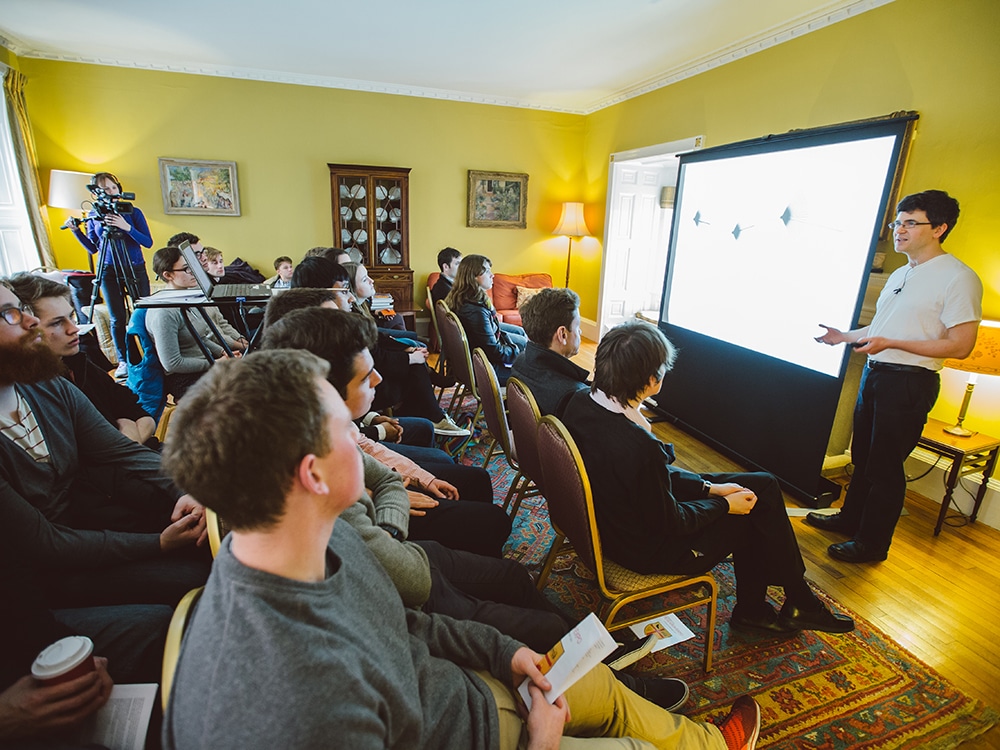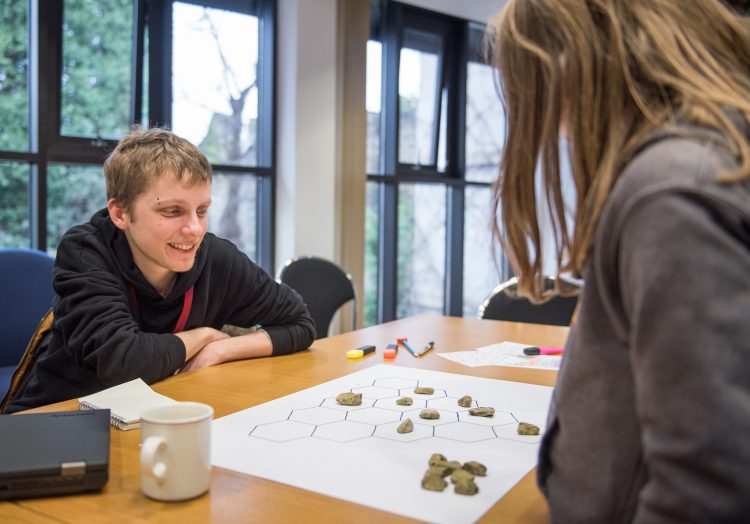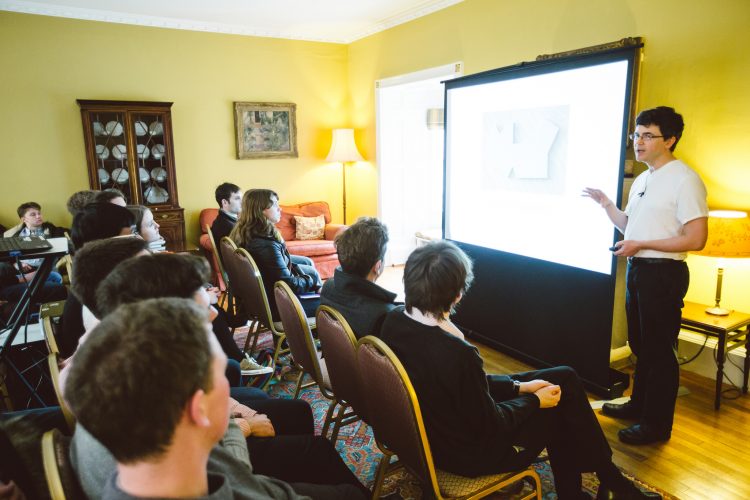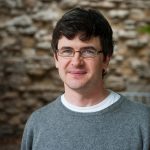Professor Oliver Riordan
Professor of Discrete Mathematics and Tutor in Mathematics
Oliver Riordan joined the Hall in October 2007 as a Tutorial Fellow in Mathematics, on his appointment as Professor of Discrete Mathematics in the Mathematical Institute.
Oliver studied as an undergraduate at Trinity College, Cambridge, where he went on to obtain his PhD in 1998. Before completing his PhD he was elected to a Trinity College Research Fellowship; he delayed taking this up to spend a year at the University of Bielefeld in Germany as a visiting researcher. From October 1998, he spent most of his time in Cambridge, first as a Trinity College Research Fellow, and then, from 2002, as a Royal Society University Research Fellow; in 2006 he was also elected to a Trapnell Fellowship at King’s College, Cambridge. The flexibility of these research fellowships allowed Oliver to accept many invitations to travel abroad for research collaborations, including spending a semester in Memphis, Tennessee (where he had already spent a year during his PhD), and many visits to places such as ETH Zürich, and Microsoft Research, Redmond.
In 2006, Oliver co-chaired a two month program on “Random graphs and large-scale real-world networks” at the Institute for Mathematical Sciences, National University of Singapore. In 2007, he was awarded a Whitehead Prize by the London Mathematical Society, for his “major contributions to graph polynomials, random graphs, extremal combinatorics, models of large-scale real-world graphs, and percolation theory”.
Oliver’s research interests have varied with time, but the main focus is and always has been discrete structures, in particular “graphs”, i.e., mathematical models of networks. Graph theory is the study of abstract properties of binary relationships among a finite set of objects that do not depend on what the objects are, or what the relationship is. A particularly active part of graph theory is the study of “random graphs”, i.e., random relationships or networks obtained by tossing a coin for each pair of objects to decide whether they are related or connected. Surprisingly, this field has many applications; in particular, it tells us that certain things (for example the “small world phenomenon”) are not surprising, since they are properties of almost all networks!
In 1999 Christopher Monckton launched a new type of puzzle, similar to a jigsaw but with 209 plain green plastic pieces with geometric shapes. To attract interest, and increase sales, he offered a £1,000,000 prize for the first solution if found within a time limit of a few years. Professor Oliver Riordan here describes some of the ideas Alex Selby and he developed to work on this puzzle, and explains (briefly!) how mathematicians think about such things. He also outlines where the inventor, who expected the puzzle to be much too hard to be solved, went wrong.
This is one of a series of Teddy Talks recorded at St Edmund Hall’s Research Expo in 2015. Teddy Talks are short presentations (usually around 12 minutes long) by St Edmund Hall academics and postgraduate students about an aspect of their research, aimed at a non-specialist audience.

Where next?


Mathematics & Philosophy


Professor Oliver Riordan
MA (BA, PhD Camb)
- Professor of Discrete Mathematics and Tutor in Mathematics
- Governing Body Fellow
- Secretary to the Governing Body (HT & TT24)